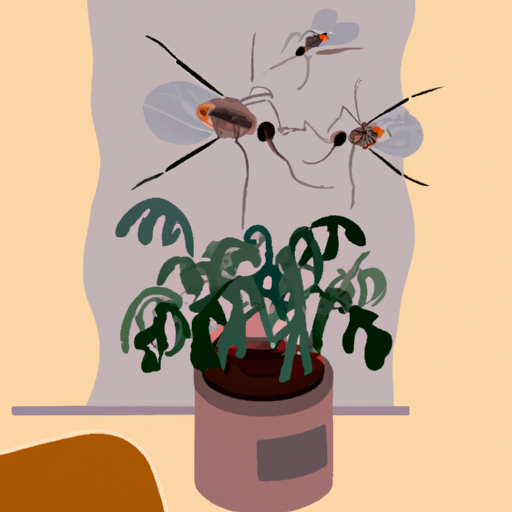Gnats are small, flying insects that belong to the family of Diptera, which also includes flies and mosquitoes. They are typically 1-3 mm in length and have a slender, delicate body with long legs and wings. Gnats are found in a variety of habitats, including moist environments such as wetlands, streams, and forests, as well as in and around homes and gardens. In this blog post, we will explore what gnats are, their life cycle, and how to control their populations in your home or garden.
Types of Gnats
There are several different types of gnats, each with their unique characteristics and behaviors. The most common types of gnats include:
- Fungus gnats: These gnats are small, black or dark-brown insects that are often found in damp soil and potted plants. They feed on plant roots and can be a common problem in greenhouses and indoor plants.
- Fruit flies: Fruit flies are small, yellow-brown flies that are commonly found in kitchens and other areas where food is present. They feed on fermenting fruits and vegetables and can be a nuisance in the home.
- Drain flies: Drain flies are small, fuzzy insects that are typically found in bathroom drains and septic systems. They feed on organic matter in the drain and can cause unpleasant odors and clogs.
Life Cycle of Gnats
Gnats have a relatively short life cycle, typically lasting 2-4 weeks. The life cycle of a gnat begins with an egg, which is laid in a moist environment such as soil, rotting fruit, or decaying organic matter. The egg hatches into a larva, which feeds on the surrounding material and grows in size over several days. The larva then enters the pupal stage, where it undergoes metamorphosis and transforms into an adult gnat. The adult gnat emerges from the pupa and begins to fly and mate, thus completing the life cycle.
Controlling Gnats
Controlling gnats can be a challenge, as they are often attracted to moist, decaying environments that are difficult to eliminate. However, there are several steps you can take to control the gnat population in your home or garden:
- Remove standing water: Gnats are attracted to standing water, so it’s important to eliminate any sources of standing water in your home or garden. This can include emptying pet water bowls, fixing leaky faucets, and properly draining any outdoor areas that tend to accumulate water.
- Clean regularly: Regular cleaning can help eliminate gnats by removing potential food sources and breeding grounds. Be sure to wipe down kitchen counters, clean up spills promptly, and dispose of rotting fruit and vegetables.
- Use natural remedies: Several natural remedies can help control gnats, such as apple cider vinegar traps, neem oil, and essential oils such as lavender, peppermint, and eucalyptus. These remedies can be effective at repelling and eliminating gnats without the use of harsh chemicals.
- Chemical treatments: If natural remedies are not effective, chemical treatments can be used to control gnat populations. However, it’s important to use these treatments carefully and follow all instructions to avoid harming yourself or the environment.
In conclusion, gnats are small, flying insects that can be a nuisance in the home and garden. Understanding their life cycle and taking steps to eliminate their breeding grounds can help control their population and reduce their impact on your daily life. By using natural remedies and being vigilant about cleaning and maintenance, you can help ensure that your home or garden remains gnat-free.

